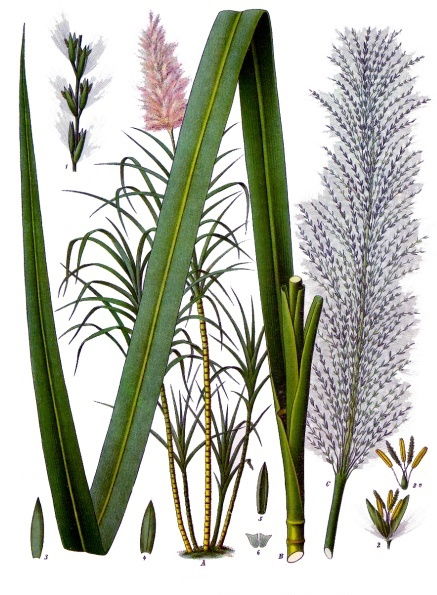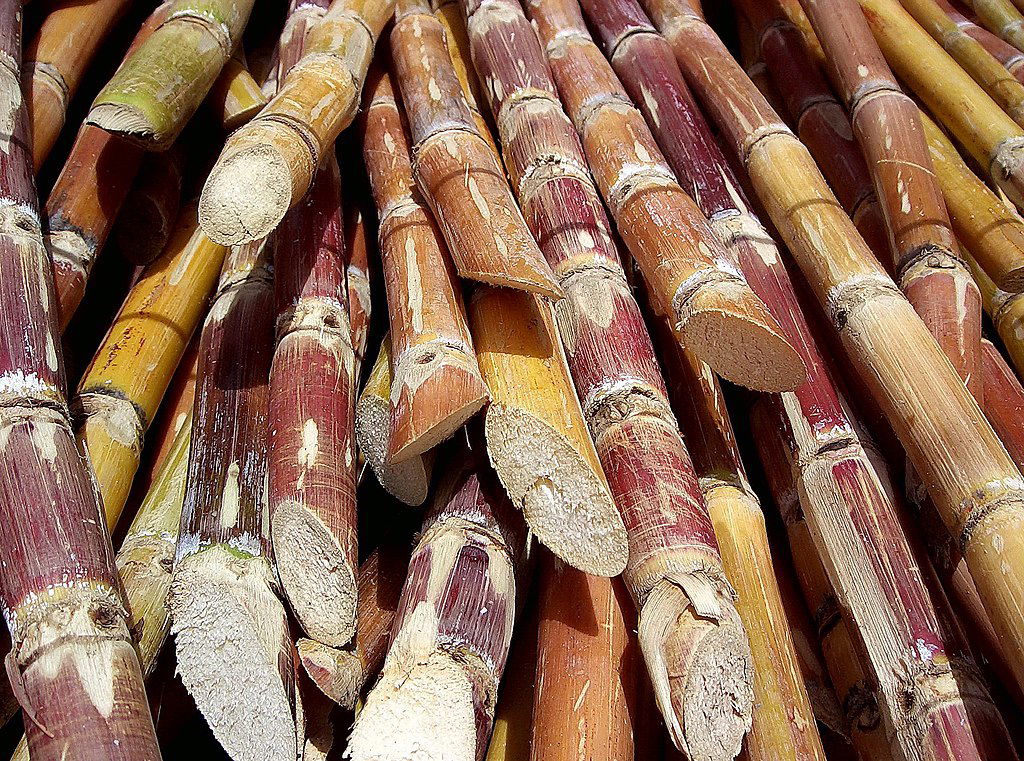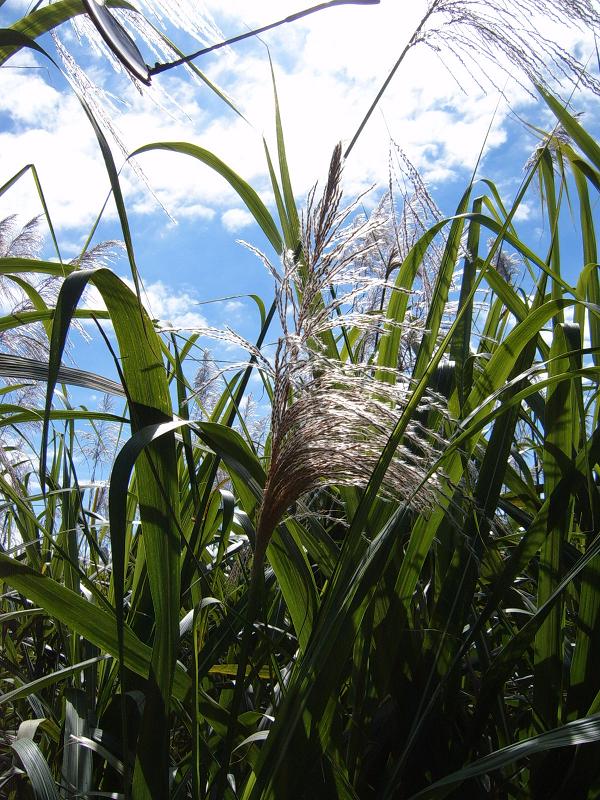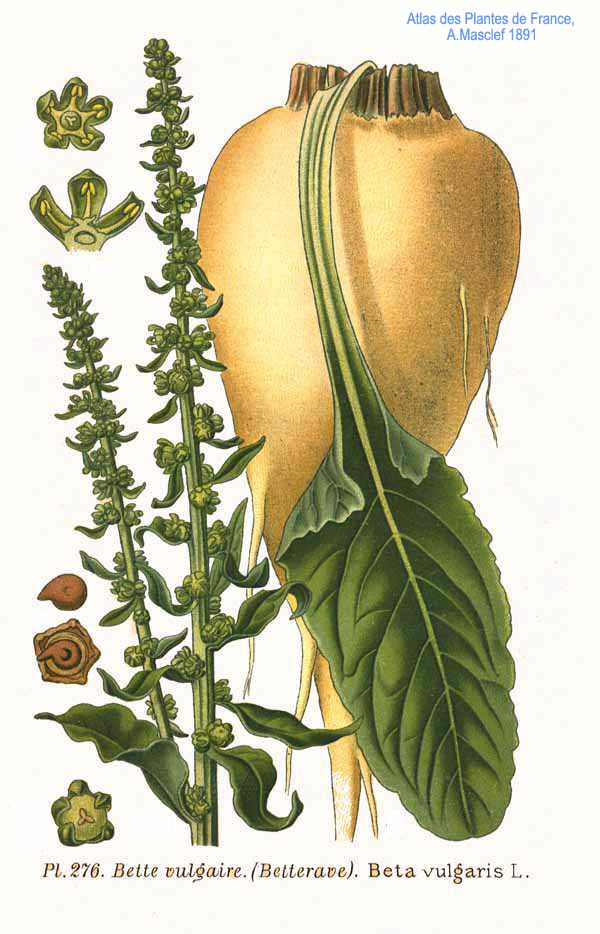Sugar Cane

Sugar Cane
Sugar Cane, Nature’s Candy
My Love Letter
I was first introduced to Sugar Cane on vacation in Barbados. I was there for my friend’s wedding and not far from the bride’s house was a sugar cane field.
I remember watching storm clouds gather and all of a sudden I smelled a sweet aroma in the air. I told my friend’s cousin and he told me I was smelling the cane field down the road. I told him that I don’t think I ever smelled sugar before. I told him that I had never smelled anything quite like and it must be nice to live in a place that smell sweet before it rains.
He went on to tell me that God is Bajan and asked if I had ever tasted sugar straight from the cane.
I said no.
This all happened when I was much younger and knew nothing of agriculture. In my mind, things in nature were dirty and had to be washed and scrutinized to ensure they were safe, whereas, in Barbados people would pluck a cherry of a tree and just eat it. Unwashed, unconcerned about bugs, unbothered. My stay in Barbados showed me not only that island living was different that desert living, but also that there was a sense of community around nature that was new to me.
After the short lived thunderstorm, we walked about half-a-mile on a dirt road to the sugar cane field. He carried a rusty machete.
As a true American-minded person, I asked who owned the sugar cane fields. He responded, who really owns anything. In the end, it all belongs to God. I was surprised by the answer and he continue to teach me about sugar cane. He told me that the field was mature and soon, machinery will come and get the stalks to make rum.
He examined the crop looking for a good stalk. Something about nothing to old. He found a stalk and started to hack at it. Before I knew it he was peeled it and hand me a piece to taste. I was pleased to taste a new type of sweetness. It was sweet but also mineral-tasting. It wasn’t overpowering and it made me smile.
When the guy saw my smile, he turned and went to look for more sugar cane to bring back to the family.
As we walked back to the house, me knowing on my personal piece of sugar cane and him with 5 or more stacks he carried in his hands, he told me of his youth. How this was an almost daily ritual between him and his friends. Sometimes on the way to school, they would snap off a stalk or on their way home. He seemed really happy to have relived that ritual today with me.
About Sugar Cane
Sugarcane is a tall, perennial grass that is used for sugar production. The grass can get as tall as 20 ft but it usually is around 6-8ft. Sugarcane looks a little bit like bamboo. The stalks are fibrous and is rich in sucrose (the precursor to sugar as we know it).
Modern hybrid sugarcane is one of the most harvested crops on the planet, used to make products including sugar, molasses, bioethanol, and bio-based materials. It also has one of the most complex genetic blueprints.
Until now, sugarcane’s complicated genetics made it the last major crop without a complete and highly accurate genome. Scientists have developed and combined multiple techniques to successfully map out sugarcane’s genetic code. With that map, they were able to verify the specific location that provides resistance to the impactful brown rust disease that, unchecked, can devastate a sugar crop. Researchers can also use the genetic sequence to better understand the many genes involved in sugar production.
Sugarcane has about 10 billion base pairs, the building blocks of DNA; for comparison, the human genome has about 3 billion. Many sections of sugarcane’s DNA are identical both within and across different chromosomes. That makes it a challenge to correctly reassemble all the small segments of DNA while reconstructing the full genetic blueprint.

Nutrition
One serving (28.35 grams) of sugarcane juice contains:
Nutrient | Amount |
|---|---|
Calories | 98 |
Protein | 0.3 grams |
Fat | 0.5 grams |
Carbohydrates | 22.8 grams |
An 8-ounce serving, approximately 240 ml of sugarcane juice (with no additives) contains 98kcal. It has zero cholesterol and small amounts of fat, fiber and protein. It also contains sodium, potassium, calcium,magnesium, and iron. well as vitamins A, B1, B2, B3, B5, B6, C & E.
Sugarcane juice is widely used in India where it's valued as a treatment for a number of health conditions, including jaundice, painful urination, inability to urinate and other urinary problems, notes a paper published in Pharmacognosy Review in January-June 2015. Indian healers assert that the regular use of sugarcane juice keeps urine flowing clear and efficiently, which assists in kidney function. Sugarcane juice is also used as an aphrodisiac, a laxative, an antiseptic and a tonic.
Don't confuse sugarcane juice with evaporated cane sugar. The latter is the processed product that results from the dehydration of pure sugarcane juice. Evaporated cane sugar is just a fancy way of saying "sugar" and doesn't offer the same benefits as raw sugarcane or the juice. Many products you wouldn't even expect to be loaded with sugar may contain this product.
Antioxidants Are Among Sugarcane Benefits
Food Chemistry published a study in March 2014 investigating the antioxidant and phenolic composition of sugarcane. A variety of types of sugarcane were investigated. The researchers found that the juice contains phenolic acids and protective compounds such as quercetin, caffeic acid and ellagic acid.
Quercetin, in particular, is an antioxidant that has anti-inflammatory and anti-carcinogenic properties, according to a paper in Mediators of Inflammation published in November 2016. Many chronic conditions, including type 2 diabetes and abdominal obesity, correlate with systemic, low-grade bodily inflammation. Quercetin is a "strong weapon" against this inflammation due to its antioxidant capacities.
Ellagic acid, according to a paper in Advances in Nutrition published in September 2016, also possesses strong anti-inflammatory effects and may be effective in helping with obesity and easing some of the complications that are associated with obesity, such as insulin resistance, type 2 diabetes and atherosclerosis.
In a paper published in a June 2015 issue of the Brazilian Journal of Medical and Biological Research , researchers explain that caffeic acid is an important antioxidant that can protect against the DNA damage caused by free radicals — elements in the environment and in your diet that cause cell destruction and mutation.
The combination of these beneficial antioxidants present in sugarcane may explain some of its reputed benefits.
https://www.livestrong.com/article/370660-the-nutrition-of-sugarcane-juice/
Top Nutrition Facts
Gives you a shot of instant energy
There’s a reason sugarcane juice sells at most roadside kiosks in summer.
It’s the best way to energize yourself and ensure you don’t experience dehydration. The simple sugars in the juice are easily absorbed by the body and are used to replenish sugar levels.
Enhances liver function
Sugarcane juice is rich in vitamins, minerals and antioxidants and helps support the health of vital organs such as the liver.
Studies find sugarcane juice is alkaline in nature, it helps in maintaining the electrolyte balance in the body.
Help the body fight cancer
Studies have shown that the plant polyphenols in sugarcane juice have a high antioxidant and anti cancer activity. It’s good to make sugarcane juice a regular part of your diet.
It eases the digestive system
Among other benefits of sugarcane juice it also is exceptional for people suffering from digestive distress.
The potassium in sugarcane juice balances the pH levels in the stomach. Drinking sugarcane juice also keeps one hydrated and helps with regular bowel movements. It also helps prevent stomach infections.
Helpful for people with diabetes
Though the high sugar content in sugarcane juice may make diabetics wary of consuming this juice. But, in moderation, sugarcane juice can benefit diabetics, the natural sugar has a low glycemic index that prevents frequent spikes in blood glucose levels.
Studies also reflect that sugarcane contains various polyphenols that help in better managing diabetic conditions and also offer antioxidants to the body.
Maintains kidney health
Being a natural zero-cholesterol, low-sodium food, with no saturated fats, sugarcane juice helps to keep the kidneys healthy.
It alleviates pain associated with UTIs
If consumed in a diluted form, with lime juice and coconut water, sugarcane juice can help reduce body inflammation by increasing your fluid intake and help manage symptoms better, like urinary tract infections, kidney stones, and prostatitis.
Aids in the development of bones and teeth
Back in the day, chewing on a sugarcane stick used to be a regular pastime for young children and adolescents. Apart from keeping them occupied, the calcium-rich benefits of sugarcane juice also ensures proper development of the skeletal system, bones, and teeth.
Keeps bad breath & tooth decay at bay
Experiencing bad breath linked to tooth decay? Sugarcane juice can be your saving grace.
Sugarcane is rich in minerals, including calcium and phosphorus, and also helps build tooth enamel and strengthen teeth, ensuring they are prone to decay. It also overcomes bad breath caused due to the deficiency of these nutrients.
Can help cure acne
Topical use of sugarcane juice has the ability to help reduce and cure skin problems such as acne. Since sugarcane juice contains alpha-hydroxy acids (AHAs) like glycolic acid, it increases cell turnover.
https://www.healthifyme.com/blog/sugarcane-juice/

Production
Grown in tropical and subtropical regions, sugarcane is the world's largest crop by production quantity, totalling 1.9 billion tonnes in 2020, with Brazil accounting for 40% of the world total. Sugarcane accounts for 79% of sugar produced globally (most of the rest is made from sugar beets). About 70% of the sugar produced comes from Saccharum officinarum and its hybrids.[7] All sugarcane species can interbreed, and the major commercial cultivars are complex hybrids.[8]
White sugar is produced from sugarcane in specialized mill factories. Sugarcane reeds are used to make pens, mats, screens, and thatch. The young, unexpanded flower head of Saccharum edule (duruka) is eaten raw, steamed, or toasted, and prepared in various ways in Southeast Asia, such as certain island communities of Indonesia as well as in Oceanic countries like Fiji.[9] The direct use of sugar cane to produce ethanol for biofuel is projected to potentially surpass the production of white sugar as an end product.
Recipe
How to Grow Sugar Cane
Interesting Facts about Sugar Cane
1. Botanical Classification: Sugar cane belongs to the genus Saccharum, which is part of the Poaceae family (grasses). The most commonly cultivated species is Saccharum officinarum.
- Reference: Babu, K. S., et al. (2018). "Sugarcane Breeding and Variety Development." International Journal of Sugarcane Technology.
2. Origin: Sugar cane is believed to have originated in Southeast Asia, particularly in New Guinea and the surrounding regions, and it has been cultivated for over 5,000 years.
- Reference: McNeil, I. (1996). "An Encyclopedia of the History of Technology." Routledge.
3. Global Production: Brazil is the largest producer of sugar cane, followed by India, China, and Thailand. These countries account for approximately 70% of the world's total sugar cane production.
- Reference: Food and Agriculture Organization (FAO). "FAOSTAT 2020."
4. Saccharose Content: Sugar cane contains a high percentage of sucrose, typically between 10% to 15% by weight, which is extracted to produce sugar.
- Reference: Nascimento, J. R. O., et al. (2017). "Composition of Sugarcane and Its By-products: A Review." Journal of Food Science and Technology.
5. Environmental Impact: The cultivation of sugar cane can lead to significant environmental challenges, including deforestation, water usage, and soil degradation if not managed sustainably.
- Reference: Fargione, J., et al. (2010). "Land Clearing and the Biofuel Carbon Debt." Science.
6. Biofuel Production: Sugar cane is also used to produce ethanol, a biofuel. Brazil is a leader in the production of bioethanol derived from sugar cane, using it as a renewable energy source for vehicles.
- Reference: Goldemberg, J., & Teixeira Coelho, S. (2004). "Ethanol Technology and Sustainability." Science.
7. Harvesting: Harvesting of sugar cane is often done by hand or by mechanical means and typically occurs between April and December in the Northern Hemisphere, while it can vary in the Southern Hemisphere.
- Reference: Rohde, R. (2015). "Sugarcane." In An Introduction to Sugarcane Production in the Tropics.
8. Seasonal Growth: Sugar cane grows best in tropical and subtropical climates, requiring warm temperatures, high sunlight, and ample rainfall.
- Reference: McCormick, K. (2018). "Climate Change and Sugarcane: Impacts and Adaptation." Climate Change Journal.
9. By-products: In addition to sugar, sugar cane generates various by-products such as molasses, bagasse (the fibrous residue), and filter cake, which can be used for animal feed, bioenergy, and other industrial processes.
- Reference: Hossain, M. I., et al. (2016). "Utilization of Sugarcane By-products." American Journal of Agricultural Science.
10. Economic Importance: Sugar cane is a vital crop for many economies, providing livelihoods for millions of farmers and workers in both developed and developing countries.
- Reference: Ramasami, T. (2012). "Sugarcane: An Economic Indicator in the Global Economy." International Journal of Agricultural Economics.





